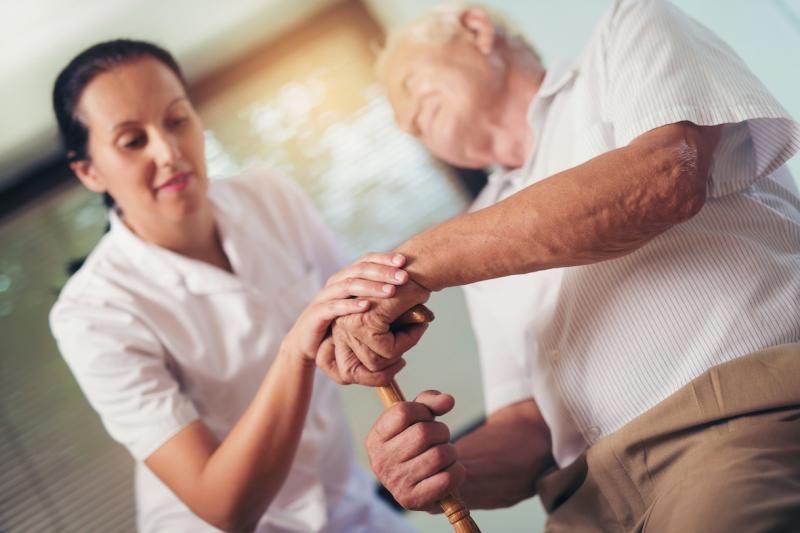Nursing home residents receive better OHCA response but develop worse neurological outcomes





Nursing home (NH) residents who develop out-of-hospital cardiac arrests (OHCAs) suffer from worse neurological outcomes, according to a recent Singapore study.
“In this secondary analysis of a prospective national OHCA registry, NH OHCA cases were shown to have poorer prognostic baseline factors that resulted in poorer outcomes despite having better bystander automated external defibrillator (AED) and cardiopulmonary resuscitation (CPR) rates,” researchers said.
They conducted a retrospective analysis of 12,112 OHCA patients (median age, 67 years; 65.0 percent male), of whom 3.7 percent (n=449) were NH residents whose attacks occurred in the NH setting; the rest of the incidents occurred elsewhere. Residents were significantly older and were more likely to have had stroke, heart disease, and hypertension, among other comorbidities. [Ann Acad Med Singapore 2020;49:285-293]
NH OHCA patients saw significantly better rates of bystander CPR (74 percent vs 43 percent; p<0.01), as well as AED use (8.5 percent vs 2.8 percent; p<0.01). The median time lapsed before AED use was also shorter in NH OHCA (4.0 vs 4.6 minutes). Emergency response was likewise better in NH OHCA cases (median time, 7.7 vs 8.7 minutes), as was scene time (15.7 vs 17.1 minutes).
Only 5.5 percent (n=528) of the participants survived to discharge or were still alive at 30 days, while 2.7 percent (n=326) survived with favourable neurological outcomes.
Despite receiving better response rates, NH OHCA patients had significantly worse survival rates at admission (11 percent vs 18 percent; p<0.01) and earned statistically worse scores in the Glasgow-Pittsburgh cerebral (0.9 percent vs 2.8 percent; p<0.05) and overall (0.9 percent vs 2.7 percent; p<0.05) performance categories.
Only four NH OHCA patients achieved good neurological outcomes. All had return of spontaneous circulation while en route to the hospital, and all four attacks were witnessed.
Regression analysis revealed that witnessed cardiac arrest was a significant positive predictor of survival to discharge or at 30 days in both incidents that were of presumed cardiac (adjusted odds ratio [OR], 2.4, 95 percent confidence interval [CI], 1.8–3.2) and noncardiac (adjusted OR, 3.8, 95 percent CI, 2.2–6.5) aetiology.
The same was true for initial shockable rhythm, which improved survival in both cardiac (adjusted OR, 12.7, 95 percent CI, 9.8–16.7) and noncardiac (adjusted OR, 5.7, 95 percent CI, 3.5–9.3) cases. AED use correlated with better survival in cardiac-aetiology OHCA (adjusted OR, 2.4, 95 percent CI, 1.6–3.5). Notably, the location where OHCA happened had no effect on survival probability.
“These findings suggest that traditional factors associated with good prognosis are relevant even in this population,” researchers said, noting that some of these factors may not be known prior to the cardiac arrest and may thus be difficult to incorporate into advanced care planning (ACP). Future studies and better data may help refine such guidelines.
“These findings can inform ACP in NH residents to help them make informed decisions on their care goals and plans,” they added.